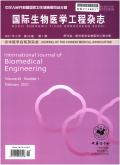Effect of umbilical cord mesenchymal stem cells on immune microenvironment and vascular reconstruction in traumatic brain injury
引用次数: 0
Abstract
Objective To investigate the effects of umbilical cord mesenchymal stem cells (UCMSCs) on immune microenvironment and angiogenesis in patients with traumatic brain injury. Methods Cerebrospinal fluid (CSF) samples were divided into 4 groups, including normal group (n=6), traumatic brain injury group (n=6), traumatic brain injury+UCMSCs treatment group (n=6) and craniocerebral trauma + conventional treatment group (n=6). The CSF samples were detected by liquid chromatography-mass spectrometry, and data were collected by data independent acquisition (DIA) technology. The differential proteins were screened by bioinformatics processing, and analyzed by Gene Ontology (GO) analysis and Kyoto Encyclopedia of Genes and Genomes (KEGG) analysis. Results A total of 688 proteins were screened in CSF samples and reliably quantified. There were 38 differential proteins in the CSF of patients with traumatic brain injury after treatment with UCMSCs, including 20 up-regulated proteins and 18 down-regulated proteins. The results of GO analysis and KEGG analysis showed that the differential proteins were mainly immunoregulatory function-related proteins, angiogenesis-related proteins, and various connexins. Conclusions The main possible mechanism of UCMSCs in the treatment of traumatic brain injury is to regulate the stability of the immune microenvironment and to promote the regeneration and reconstruction of damaged brain tissue. Key words: Traumatic brain injury; Mesenchymal stem cell transplantation; Umbilical cord; Cerebral revascularization; Immune microenvironment脐带间充质干细胞对创伤性脑损伤免疫微环境及血管重建的影响
目的探讨脐带间充质干细胞(UCMSCs)对创伤性脑损伤患者免疫微环境和血管生成的影响。方法将脑脊液样本分为4组,分别为正常组(n=6)、外伤性脑损伤组(n=6)、外伤性脑损伤+UCMSCs治疗组(n=6)和颅脑损伤+常规治疗组(n=6)。脑脊液样品采用液相色谱-质谱法检测,数据采集采用数据独立采集(DIA)技术。通过生物信息学处理筛选差异蛋白,并通过基因本体(GO)分析和京都基因与基因组百科全书(KEGG)分析进行分析。结果从脑脊液样品中筛选出688个蛋白,并可靠地定量。创伤性脑损伤患者经UCMSCs治疗后,脑脊液中存在38种差异蛋白,其中上调蛋白20种,下调蛋白18种。GO分析和KEGG分析结果显示,差异蛋白主要是免疫调节功能相关蛋白、血管生成相关蛋白和各种连接蛋白。结论UCMSCs治疗创伤性脑损伤的主要机制可能是调节免疫微环境的稳定性,促进损伤脑组织的再生重建。关键词:外伤性脑损伤;间充质干细胞移植;脐带;大脑血管再生;免疫微环境
本文章由计算机程序翻译,如有差异,请以英文原文为准。
求助全文
约1分钟内获得全文
求助全文

 求助内容:
求助内容: 应助结果提醒方式:
应助结果提醒方式:


